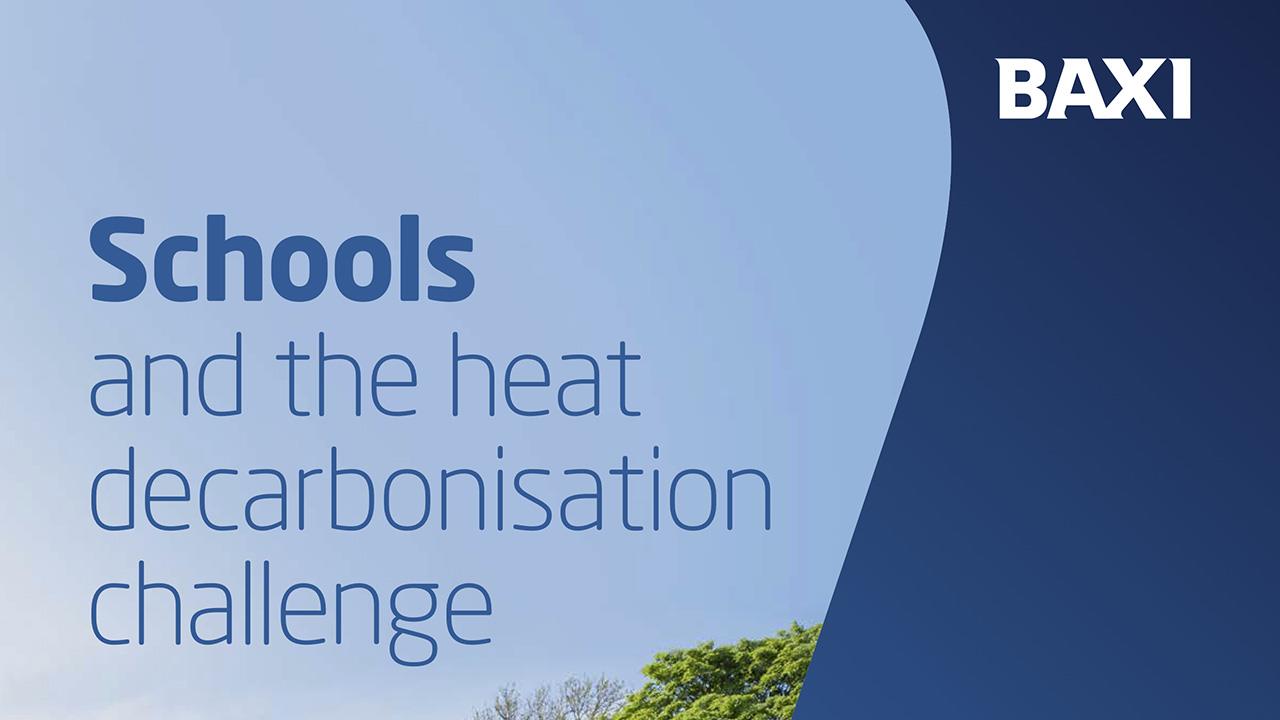

The Schools and the Heat Decarbonisation Challenge report assesses the different heating technologies, solutions, and approaches that will need to be available to schools to reduce heat-associated energy usage and emissions in their buildings while prioritising performance and practicality.
Baxi’s new guide:
Heating is one of the UK’s primary sources of emissions, accounting for around a third of the nation’s total greenhouse gas emissions. Decarbonising heat in buildings is therefore key to achieving the UK’s ambitious 2050 net-zero target. But it’s a huge challenge and one that can be particularly problematic in existing school buildings, the company says.
Andy Green, Director at Baxi Commercial Solutions, said: “As heat experts, we understand the issues that schools are up against when tackling heat decarbonisation in their buildings, particularly with the energy crisis squeezing already tight budgets.
“Ultimately, the goal is to transition to low carbon heating technology such as heat pumps. But school buildings are often complex projects for refurbishment. Estates and facilities managers, consultant engineers, M&E contractors, and installers can face an array of issues, with time, budget, available power and physical space just some of the typical limitations.”
As full decarbonisation is unlikely to be achieved overnight in older or poorly insulated school buildings with high thermal demand, plotting an achievable pathway to improved sustainability can be vital to deliver successful outcomes.
Using simulation software, the Baxi guide analyses the achievable energy and carbon savings from a phased refurbishment programme in theoretical secondary and primary schools. The simulated stages include initial measures to improve energy efficiency, the installation of a more efficient, future-ready system, and a multivalent approach involving air source heat pumps to decarbonise a large portion of the annual heat demand.
“The heat decarbonisation challenge is far from new,” Andy continued. “But the energy and climate crises make it clear that we in the heating industry need to act now to help UK schools progress towards more sustainable, affordable heat. Ensuring robust design practice is key. By working together, heating manufacturers and professionals can help schools get the most from their heating budget while ensuring best practice for heat decarbonisation.
“Even with the support outlined today by the new Prime Minister, it’s essential that schools understand all the available options to drive down heat-related energy consumption in their buildings. Full decarbonisation may not necessarily happen overnight, but, as our report shows, there is considerable value to be gained from taking even the first few steps on their pathway.”
Schools and the Heat Decarbonisation Challenge is available now for free download here.
If you'd like to keep up-to-date with the latest developments in the heating and plumbing industry, why not subscribe to our weekly newsletters? Just click the button below and you can ensure all the latest industry news and new product information lands in your inbox every week.